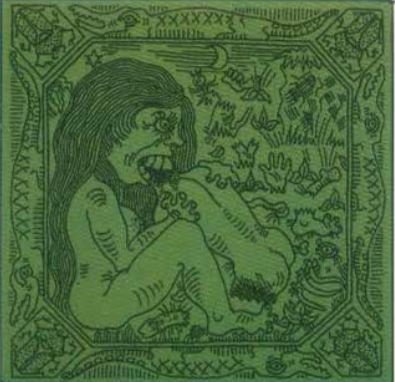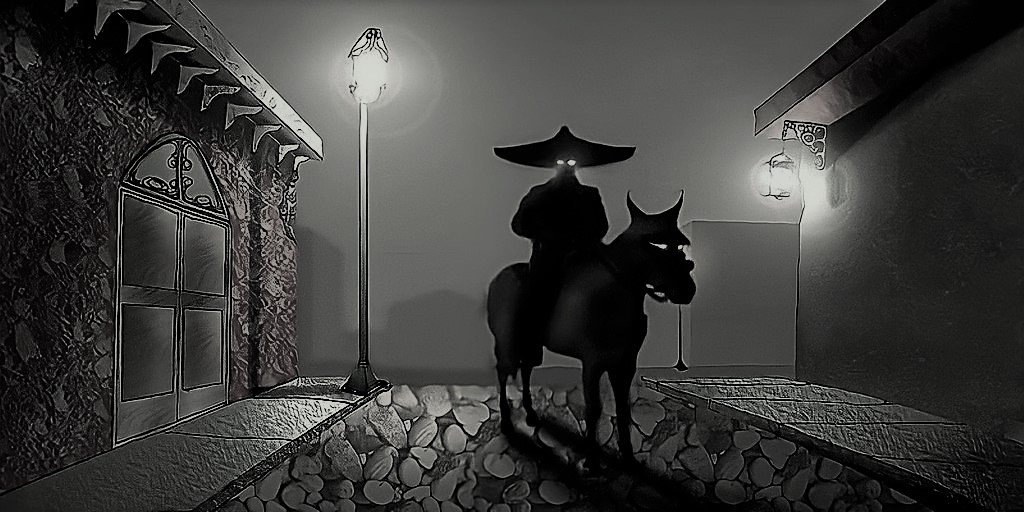5 Terrifying Christmas Myths and Monsters
Christmas is supposed to be a time of family gathering and giving, a time that is happy and joyful with its own traditions, but every holiday has its own dark myths and monsters.
Here are 5 of Christmas’ most terrifying:
Pumpkins and Watermelons Vampires
(Balkans)
We’ll start with the least frightening myth that also possibly started as a joke on an ethnologist almost a century ago. In the early 20th century Tatomir P. Vukanović traveled through Serbia recording the lore and myths of the Serbian people and later wrote a book documenting the experience and stories.
In the villages of Podrina and Prizrenski, Vukanović was told of a local legend wherein leaving out pumpkins and watermelons after Christmas would result in a sort of vampire. According to the stories ten days after Christmas, pumpkins will begin to move on their own and start emitting a “brrl-ing” sound. Shortly after, the pumpkins will roll around the home looking for victims to drain the life force from. Luckily, as vegetables don’t have teeth, there’s not much danger in picking them up and throwing them out.
But to truly destroy the vampiric entity inhabiting the vegetable, one must place it in a pot of boiling water for a short time then toss away the water and scrub the pumpkin or melon with a broom. Once that is done the vegetable can be thrown away with the final step being to burn the broom.
2. Kallikantzaros the Christmas Goblins
(Greece, Albania, Turkey, and others)
The Kallikantzaros are small Christmas goblins that attempt to enter your home in the twelve days following Christmas. According to legend, the goblins spend the year attempting to destroy the world by chopping down the World Tree (or the Tree of Life) but when the Christmas sun rises the goblins run in fear and enter Earth.
Every night for the next 12 days the goblins attempt to enter your home, able to squeeze through any openings, chimneys, gaps in doors, keyholes, and open windows. If they are able to enter they will cause mischief by breaking your items, eating your food, and spreading a horrendous smell.
While that may not be considered too horrifying, the part of the lore that can cause panic is the belief that any child born in the 12 days between Christmas and the holiday, Epiphany (January 6th) can become a Kallikantzaros. You can prevent this transformation by wrapping the baby in straw and singeing their toenails. This will prevent the small goblins from taking the child underground.
It’s said you can also prevent the Kallikantzaros from entering your home by tricking them as they are not intelligent and can only count to two. If you hang a colander on your door they will feel the need to count each hole starting over every time they reach the number two. Once the sun comes up they will run in fear and try again the following night.
After the 12 days pass the goblins return underground to find a healed World Tree and they restart their attempts at chopping it down.
3. Belsnickel the Dirty Santa
(Germany, United States)
Portrayal of Belnickel from the Landis Valley Village and Farm Museum in Lancaster
This legend has been regaining popularity in the past few years due to television shows like “The Office” featuring Belsnickel in an episode. The legend appears to have originated in Germany and was brought to the United States, specifically Pennsylvania and Maryland, in the early 1800s by European immigrants.
Belsnickel is sometimes depicted as a large imposing man wearing patchy furs and tattered clothes. In one hand he carries a birch switch (bundle of twigs from a birch tree) and in the other, he carries a nightmarish mask with horns and a long tongue.
A week or two prior to Christmas, Belsnickel taps on the windows of homes and then breaks into the children’s rooms to question them on their behavior for the prior year, essentially it’s a performance review.
According to some legends, he already knows what children have been awful and is giving them a chance to be honest and redeem themselves prior to Christmas. Those that lie or can’t be redeemed are struck with the birch switch and taken to the forest to be punished for the year.
4. Hans Trapp the Christmas Scarecrow
(France)
Hans Trapp (left)
Based on a real German knight named Hans von Trotha from the 15th century, Hans Trapp was said to be a man who had power, status, was rich, and was feared by the people in the Franco-German region later known as Alsace-Lorraine (today Alsace-Moselle). But behind his riches was the devil who had taken Hans’s soul as the price.
Eventually, his evil deeds and rumors of the devil being the source of his power reached the Pope who excommunicated Hans Trapp and confiscated everything he owned. With nothing left, Hans moved to the mountains and soon started living off human flesh from innocent victims walking the lonely roads, his preferred victims being children.
In order to lure his victims, Hans Trapp would dress up as a scarecrow and wait until the unsuspecting children approached him. Once they were a few steps away, Hans would lunge at them stabbing them in the stomach with a sharp stick. Legends say his final victim was a 10-year-old boy but when Hans was about to cook his flesh a lightning bolt from the heavens struck him down, killing him instantly.
After his death, children were warned of Hans Trapp’s spirit still searching for misbehaving children to kill and eat. The stories eventually mixed with the legends of Santa Claus looking for good children, going as far as having Hans Trapp tag along with Santa.
The real Hans Trapp, Hans von Trotha was excommunicated by the pope but not for conspiring with the devil. He was excommunicated for diverting a water source from a town due to a property dispute with the church. Trotha didn’t end up in the mountains either, he instead served in the French royal court till his peaceful death.
5. Frau Perchta the Christmas Witch
(Austria, Bavaria, and others)
Depiction of Perchta from 1910 Kingdom of Bohemia
Going by several names like Bertha, Spinning Room Lady, and the Belly-Slitter, each name gets progressively more terrifying. The legends surrounding Frau Perchta are believed to have evolved and mixed with a pagan goddess, the Germanic goddess Holda, and the Norse god Frigg; because of this, she was originally associated with spinning.
Perchta would visit homes disguised as an elderly gaunt woman in the 12 days between Christmas and Epiphany to ensure all children had worked hard all year spinning yarn and wool. Those that had worked hard would later find a silver coin in a shoe but those that didn’t, faced deadly consequences.
From under her skirt, Perchta would reveal a large knife and cut open the belly of the child in one swing. After removing all their organs she would then fill their stomach with straw, pebbles, and garbage.
In some stories, Perchta arrives with a pack of soulless victims following her, having gained a demonic appearance. In other stories, Perchta isn’t only looking for those children who haven’t spun all year but also for messy homes and for those who don’t offer her a traditional bowl of porridge. As with the other legends, anyone who doesn’t fulfill the traditional requirements meets a deadly end.
Other Sources
Learn a Little Bit of Everything!
Myths, Mysteries, & Monsters


















